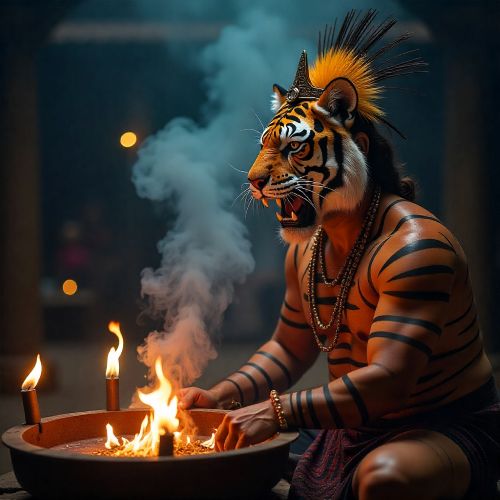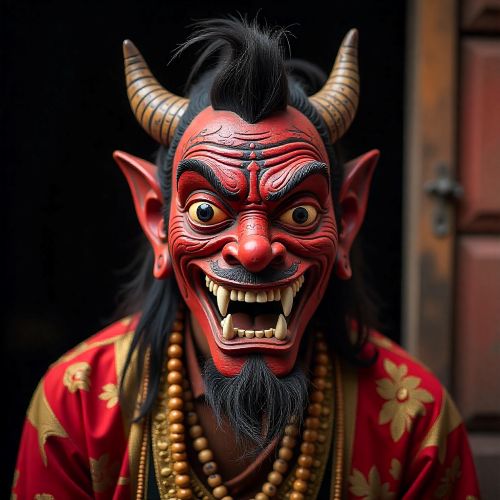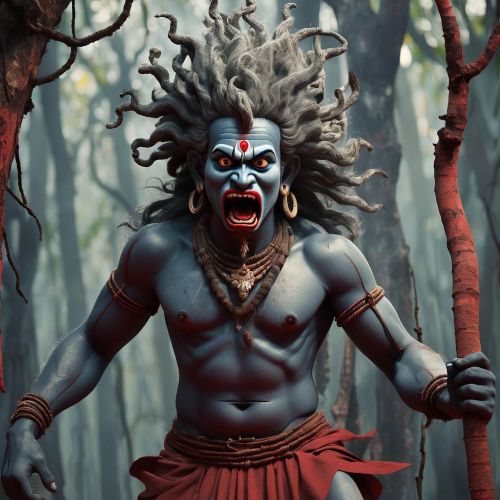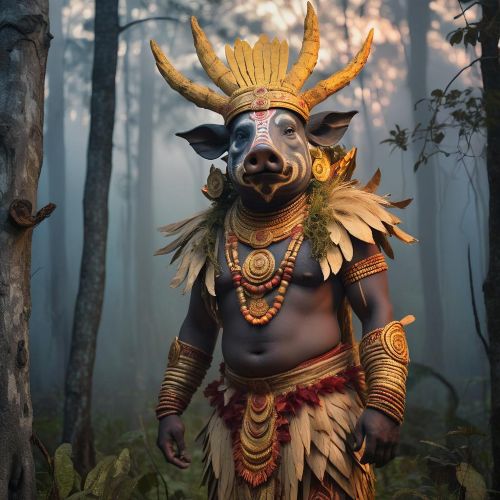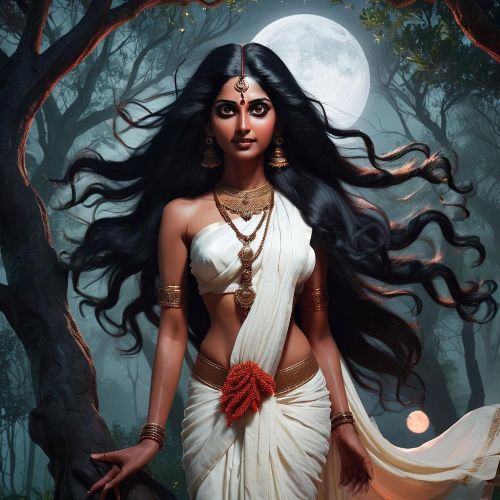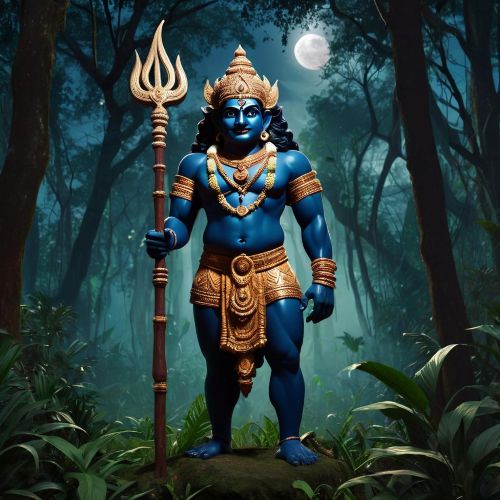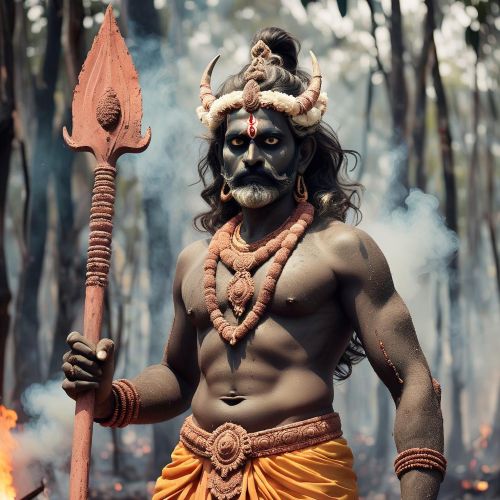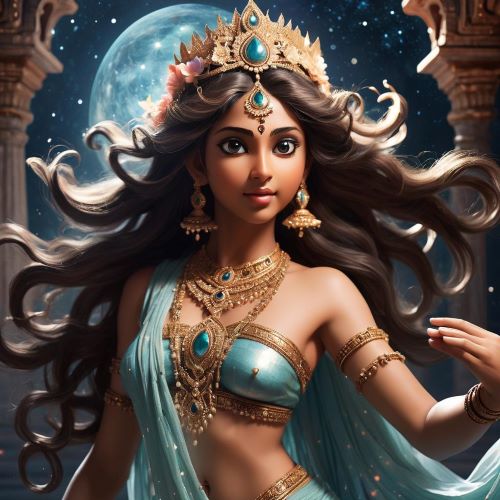South Asian Spirits
South Asian spirits hold a significant place in the mythology and spiritual traditions of the region, particularly in cultures such as Hinduism, Buddhism, and local tribal beliefs. These spirits are often believed to inhabit natural elements like forests, rivers, and mountains, as well as the realm of ancestors and the underworld. Their influence is seen in rituals, ceremonies, and folklore, where they are both revered and sometimes feared. South Asian spirits are known to act as intermediaries between the human and divine worlds, guiding, protecting, or challenging mortals on their spiritual and earthly journeys.
Many South Asian spirits are deeply connected to nature, embodying the elements and landscapes that are sacred to various cultures. In Hinduism, spirits such as Yakshas and Gandharvas are associated with natural beauty and abundance, serving as guardians of forests and treasures. They are believed to interact with humans, offering blessings or testing their morality. In contrast, spirits like the Bhutas, common in South Indian folklore, are often seen as restless souls or malevolent entities that haunt specific locations. This duality reflects the complex relationship South Asian cultures have with the spiritual realm, where spirits can be both benevolent and fearsome.
Ancestral spirits also play a prominent role in South Asian mythology, with many traditions emphasizing the importance of honoring and appeasing the souls of the departed. These spirits are thought to influence the living, offering protection, guidance, or, in some cases, seeking retribution. Festivals like Pitru Paksha in Hinduism are dedicated to paying respect to ancestors, ensuring their peaceful afterlife and continued favor for the living. In this way, South Asian spirits serve as a vital link between the past and present, maintaining the continuity of family and community ties through the generations.
In addition to nature and ancestral spirits, South Asian mythology is rich with tales of supernatural beings like Asuras, Rakshasas, and Nagas. These spirits are often depicted as powerful, otherworldly entities with immense strength and abilities. While some, like the Nagas, are revered as protectors of water bodies, others, like the Rakshasas, are known for their trickery and destructive tendencies. These spirits are frequently involved in epic battles between good and evil, reflecting the eternal struggle for balance in the cosmos. Their stories have been immortalized in texts like the Mahabharata and Ramayana, further embedding their significance in South Asian culture.
The presence continues to influence modern spiritual practices and folklore. In rural areas, belief in spirits remains strong, with rituals and ceremonies conducted to ensure harmony between humans and the spiritual world. Even in urban settings, the influence of these spirits can be seen in festivals, religious art, and traditional storytelling. South Asian spirits, with their deep connections to nature, ancestors, and the divine, remain an integral part of the region’s rich mythological heritage, embodying the complex relationship between the seen and unseen worlds.
South Asian spirits hold a significant place in the mythology and spiritual traditions of the region, particularly in cultures such as Hinduism, Buddhism, and local tribal beliefs. These spirits are often believed to inhabit natural elements like forests, rivers, and mountains, as well as the realm of ancestors and the underworld. Their influence is seen in rituals, ceremonies, and folklore, where they are both revered and sometimes feared. South Asian spirits are known to act as intermediaries between the human and divine worlds, guiding, protecting, or challenging mortals on their spiritual and earthly journeys.
Many South Asian spirits are deeply connected to nature, embodying the elements and landscapes that are sacred to various cultures. In Hinduism, spirits such as Yakshas and Gandharvas are associated with natural beauty and abundance, serving as guardians of forests and treasures. They are believed to interact with humans, offering blessings or testing their morality. In contrast, spirits like the Bhutas, common in South Indian folklore, are often seen as restless souls or malevolent entities that haunt specific locations. This duality reflects the complex relationship South Asian cultures have with the spiritual realm, where spirits can be both benevolent and fearsome.
Ancestral spirits also play a prominent role in South Asian mythology, with many traditions emphasizing the importance of honoring and appeasing the souls of the departed. These spirits are thought to influence the living, offering protection, guidance, or, in some cases, seeking retribution. Festivals like Pitru Paksha in Hinduism are dedicated to paying respect to ancestors, ensuring their peaceful afterlife and continued favor for the living. In this way, South Asian spirits serve as a vital link between the past and present, maintaining the continuity of family and community ties through the generations.
In addition to nature and ancestral spirits, South Asian mythology is rich with tales of supernatural beings like Asuras, Rakshasas, and Nagas. These spirits are often depicted as powerful, otherworldly entities with immense strength and abilities. While some, like the Nagas, are revered as protectors of water bodies, others, like the Rakshasas, are known for their trickery and destructive tendencies. These spirits are frequently involved in epic battles between good and evil, reflecting the eternal struggle for balance in the cosmos. Their stories have been immortalized in texts like the Mahabharata and Ramayana, further embedding their significance in South Asian culture.
The presence continues to influence modern spiritual practices and folklore. In rural areas, belief in spirits remains strong, with rituals and ceremonies conducted to ensure harmony between humans and the spiritual world. Even in urban settings, the influence of these spirits can be seen in festivals, religious art, and traditional storytelling. South Asian spirits, with their deep connections to nature, ancestors, and the divine, remain an integral part of the region’s rich mythological heritage, embodying the complex relationship between the seen and unseen worlds.


